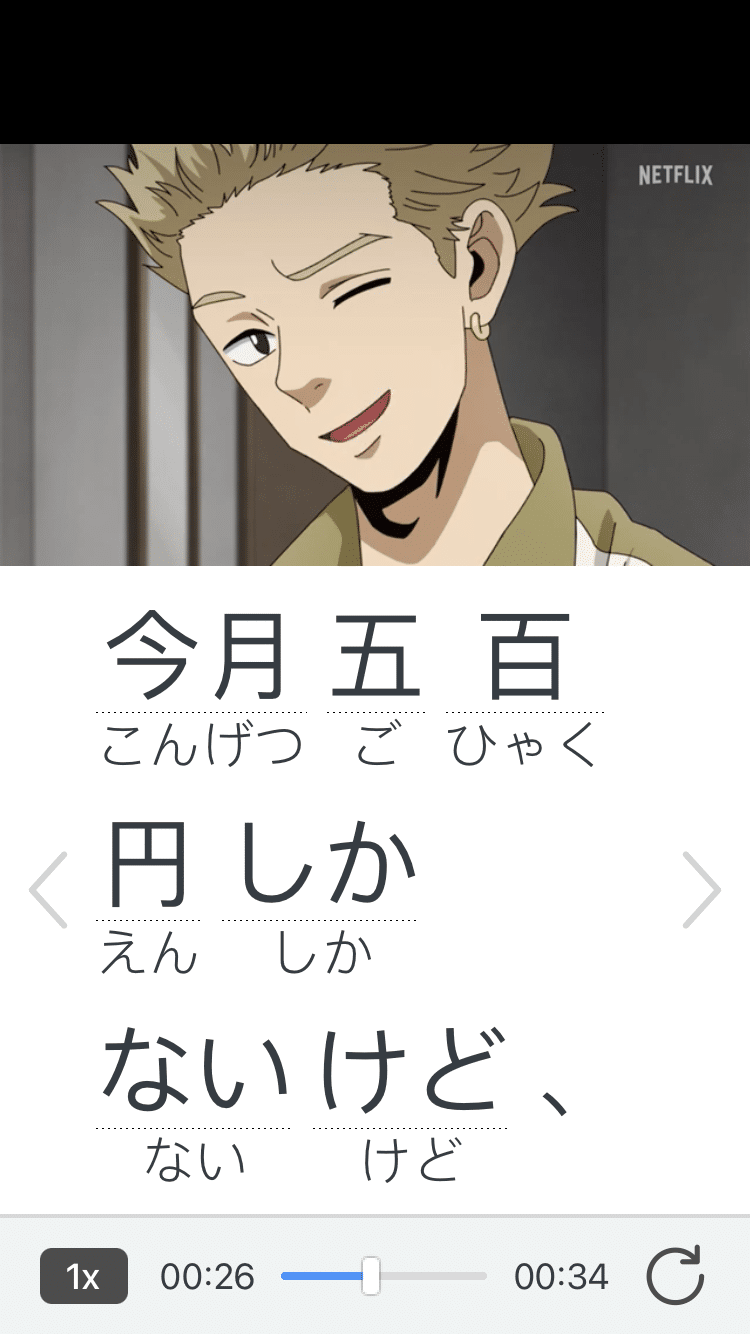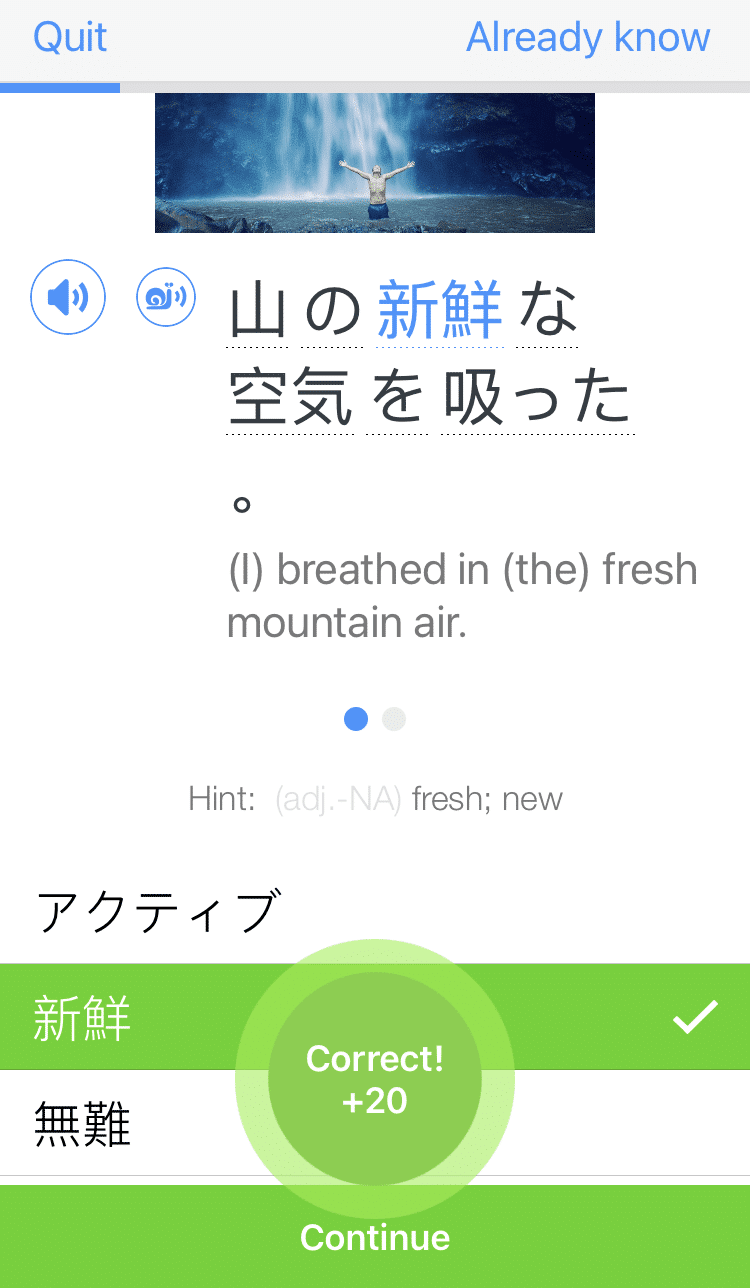The In-depth Guide to Japanese Adjectives: What They Are, Conjugations, Endings and Examples

Adjectives are the crayons of the speech world. They add color and interest to conversations.
I learned their importance quickly when I began to study Japanese. Adjectives helped me describe my travel stories to my Japanese tutor, which filled in a lot of awkward pauses during study sessions.
As in English, Japanese adjectives come before the noun they’re describing. Think: bright lights, tall buildings or expensive food.
There are two types of Japanese adjectives: い-adjectives and な-adjectives. Except one, all い-adjectives and な-adjectives follow the same set of rules, so learning them is a cinch!
In this post, you’ll learn everything you need to know about Japanese adjective conjugation so you can start using them confidently.
Download: This blog post is available as a convenient and portable PDF that you can take anywhere. Click here to get a copy. (Download)
Which Japanese Adjectives Should You Learn First?
- Learn frequently-used adjectives. Japanese adjectives help you describe people, places, things and situations. They’re an essential part of conveying your thoughts and ideas, but for language learners the task can be a bit daunting. Usually, we’re introduced to elementary adjectives like “dark” or “wide”—which are definitely essential, but won’t help you describe all your feels when your favorite manga spirals into a sudden plot twist.
- Learn adjectives that are relevant to your life. Think of situations that will occur when you’re in Japan or speaking Japanese. Will you be asking for directions? If so, then you’ll benefit greatly from knowing adjectives such as “far” and “near.” Likewise, if you’re going to be shopping for clothes in Tokyo’s best boutiques or taste-testing local cuisine, then adjectives like “expensive” and “reasonable,” or “spicy” and “refreshing” might suit you better.
- Learn essential, common adjectives. You’ll need to know these adjectives, especially if you’re studying for something like the JLPT (Japanese Language Proficiency Test). Or if you want to know what everyone’s talking about. The good thing about these adjectives is that most learning resources will introduce them immediately. You can definitely expect to bump into these words from the very beginning:
高い (たかい) — high, tall, expensive
短い (みじかい) — short
遅い (おそい) — late, slow
- Identify adjectives that you personally use most. These are adjectives that you use in conversation frequently. Since I like to talk about gossip and fashion, my most frequent adjectives would probably be:
まずい — awkward, untimely, unpleasant
キモい (きもい) — gross, disgusting
粋 (いき) — stylish, chic
How to Conjugate い-Adjectives
い-Adjectives (also called “True Adjectives” or “Pure Adjectives”) are adjectives that end in the kana character い.
Note that not every adjective that ends in い is an い-adjective, but we’ll learn more about that in just a bit. Some examples of い-adjectives are:
速い (はやい) — fast
寒い (さむい) — cold
甘い (あまい) — sweet
い-adjectives come directly before the noun they’re describing, as you can see below:
彼女は速い走者だ。
(かのじょは はやい そうしゃだ。)
She’s a fast runner.
甘い食べ物が好きだよ。
(あまい たべものが すきだよ。)
I love sweet food.
They can also be used alone, without a noun proceeding them:
今日は少し寒いね。
(きょうは すこし さむいね。)
Today is a bit cold.
速いです。
(はやいです。)
It’s fast.
When conjugated, the character い is dropped and replaced with another ending.
As an example, let’s look at the adjective 安い (やすい) — cheap.
| Tense | Casual | Normal - Polite |
|---|---|---|
| Present | 安い やすい | 安いです やすいです |
| Past | 安かった やすかった | 安かったです やすかったです |
| Negative | 安くない やすくない | 安くありません やすくありません |
| Past Negative | 安くなかった やすくなかった | 安くありませんでした やすくありませんでした |
Here are two examples of い-adjectives in the past tense:
カメラは安かった
(かめらはやすかった)
The camera was cheap
昨日、外は寒くなかった
(きのう、そとは さむくなかった)
It wasn’t cold outside yesterday
How to Conjugate な-Adjectives
な-adjectives are also called “Quasi Adjectives” or “Adjectival-Nouns.” These adjectives end in all sorts of characters, including い.
Some examples of な-adjectives are:
きれい — pretty, clean
元気 (げんき) — healthy, lively
好き (すき) — like
Note that “like” in Japanese is an adjective, rather than a verb. Think of it as saying something is “favorable” or “desirable.”
The character な is always placed between な-adjectives and nouns.
好きな料理
(すきな りょうり)
A favorite dish
彼は元気な子供ですね。
(かれは げんきな こどもですね。)
He’s a lively child.
The character な can be dropped if no noun proceeds the adjective.
浴室はきれいですか?
(よくしつは きれいですか?)
Is the bath clean?
好きです。
(すきです。)
I like it.
If you know how to conjugate です, then you already know how to conjugate な-adjectives.
な-adjectives can’t be conjugated alone.
Instead, their tenses are indicated by conjugating です.
For example, if you wanted to say something was convenient, you’d take the adjective convenient, 便利 (べんり), and use the past form of です to create:
便利でした (べんりでした) — was convenient
| Tense | Casual | Normal - Polite |
|---|---|---|
| Present | だ | です |
| Past | だった | でした |
| Negative | ではない | ではありません |
| Past Negative | ではなかった | ではありませんでした |
Some other examples are:
きれいでした
It was clean
お好み焼きは好きな料理だった
(おこのみやきは すきな りょうりだった)
Okonomiyaki was (my) favorite dish
How to Distinguish Between い-Adjectives and な-Adjectives in Japanese
- Look at how the adjective is written. In their plain form, all い-adjectives will end with the character い. See the following examples:
面白い (おもしろい) — interesting
新しい (あたらしい) — new
楽しい (たのしい) — fun
- Most な-adjectives consist of only kanji characters or end in a kana character that isn’t い. See the following examples:
便利 (べんり) — convenient
静か (しずか) — quiet
有名 (ゆうめい) — famous
- Look at the conjugation. The previous rules work for most adjectives, but not all of them. When in doubt, look at the adjective’s conjugation. As you continue to study Japanese, you’ll hear な follow な-adjectives and you’ll use it automatically. If you watch dramas, you may develop the habit of looking off into the sunset and whispering to yourself, “きれいな…” (“beautiful…”).
- い-adjectives can be changed to な-adjectives. This is done when the last い is dropped from the い-adjective and replaced with な. This is only done when the adjective is placed right before the noun it describes. This is done with common い-adjectives such as 大きい (おおきい — big) and 小さい (ちいさい — small). For example:
大きな木 (おおきな き) — big tree
小さなカップ (ちいさな かっぷ) — tiny cup
Other than in songs, poetry and expressions, you won’t see い-adjectives take the form of な-adjectives—but it’s good to be aware.
いい: The Only Irregular Adjective in Japanese
Japan’s lonesome irregular adjective is いい.
いい is an い-adjective that means “good.” It’s derived from the word 良い (よい), meaning good.
いい appears in hiragana, while 良い is usually written in kanji. いい doesn’t conjugate, while 良い follows い-adjective’s conjugation rules:
| Tense | Casual | Normal - Polite |
|---|---|---|
| Present | 良い (よい) | 良いです (よいです) |
| Past | 良かった (よかった) | 良かったです (よかったです) |
| Negative | 良くない (よくない) | 良くありません (よくありません) |
| Past Negative | 良くなかった (よくなかった) | 良くありませんでした (よくありませんでした) |
The meaning between the two words changes slightly when conjugated.
良かったです (よかったです) would literally mean “It was good,” but usually expresses that “something turned out all right,” or is used to say “thank goodness.”
Japanese Adjective Endings
In Japanese, a suffix is added to a verb or adjective to change its meaning.
For example, by adding the suffix -くてたまりません (unbearably) to the adjective hot, 暑い (あつい), you’ll get:
暑くてたまりません
(あつくて たまりません)
Unbearably hot
Many suffixes that are used with verbs can be used with adjectives. Now that you know some adjectives, it’s time to dress them up and really express yourself:
過ぎる (すぎる) — Too [adj]
Rules:
For い-adjectives, drop the final い.
For な-adjectives, omit です.
Examples:
今日は暑過ぎる。
(きょうは あつすぎる。)
It’s too hot today.
私のフランス語は下手過ぎる。
(わたしの ふらんすごは へたすぎる。)
My French is too poor.
そう — Looks like, seems like [adj]
Rules
For い-adjectives, drop the final い.
An い-adjective turns into a な-adjective when you add そう to it.
For な-adjectives, omit です.
いい becomes 良さそう (よさそう).
ない (negative form) becomes なさそう.
Examples
彼女は高そうなドレスを着ていた。
(かのじょは たかそうな どれすをきていた。)
She wore an expensive-looking dress.
調子が良くなさそうですよ。
(ちょうしが よくなさそう ですよ。)
You don’t look well.
くなる — Become [adj]
Rules
For い-adjectives, drop the final い.
For な-adjectives, omit です.
Examples
明日は寒くなるでしょう。
(あしたは さむくなるでしょう。)
It’ll probably become cold tomorrow.
飲みやすくなる。
(のみやすくなる。)
It’ll become easier to drink.
さ — the suffix “-ness” [adj]
This adds a degree or quality to an adjective.
Rules
For い-adjectives, drop the final い.
な-adjectives don’t often use this ending with some exceptions including (but not limited to):
便利さ (べんりさ) — convenience
重要さ (じゅうようさ) — importance
静かさ (しずかさ) — peacefulness
Examples
優しさと弱さを混同するなかれ。
(やさしさと よわさをこんどうするなかれ。)
Don’t confuse kindness with weakness.
私はホテルの快適さと便利さを楽しむのが好きよ。
(わたしは ほてるの かいてきさと べんりさをたのしむのが すきよ。)
I like to enjoy the comfort and convenience of hotels.
ければ — If it is [adj]
Rules
For い-adjectives, drop the final い.
For な-adjectives, omit です and then add ならば or であれば.
Examples
熱ければ、冷まして飲みなさい。
(あつければ、さまして のみなさい。)
If it’s hot, let it cool down before drinking it.
明日暇であれば、一緒に行きましょうね。
(あした ひまであれば、いっしょに いきましょうね。)
If you’re free tomorrow, let’s go together
くなければ — If it is not [adj]
Rules
For い-adjectives, drop the final い.
For な-adjectives, use でなければ.
Examples
それがおいしくなければ、食べません。
(それが おいしくなければ、たべません。)
If it’s not delicious, don’t eat it.
病気でなければ、彼は来るだろう。
(びょうきでなければ、かれは くるだろう。)
If he’s not ill, he’ll come.
Like most people, I rely on repetition to memorize new vocabulary and grammar. So practice as much as possible.
You can also find and practice countless useful adjectives in Japanese media, such as movies and dramas. There’s also the language learning program FluentU, which uses native Japanese videos to teach the language in context.
FluentU takes authentic videos—like music videos, movie trailers, news and inspiring talks—and turns them into personalized language learning lessons.
You can try FluentU for free for 2 weeks. Check out the website or download the iOS app or Android app.
P.S. Click here to take advantage of our current sale! (Expires at the end of this month.)

So what are you waiting for? Go out there and start describing things in Japanese!
Download: This blog post is available as a convenient and portable PDF that you can take anywhere. Click here to get a copy. (Download)
And One More Thing...
If you love learning Japanese with authentic materials, then I should also tell you more about FluentU.
FluentU naturally and gradually eases you into learning Japanese language and culture. You'll learn real Japanese as it's spoken in real life.
FluentU has a broad range of contemporary videos as you'll see below:

FluentU makes these native Japanese videos approachable through interactive transcripts. Tap on any word to look it up instantly.

All definitions have multiple examples, and they're written for Japanese learners like you. Tap to add words you'd like to review to a vocab list.

And FluentU has a learn mode which turns every video into a language learning lesson. You can always swipe left or right to see more examples.

The best part? FluentU keeps track of your vocabulary, and gives you extra practice with difficult words. It'll even remind you when it’s time to review what you’ve learned. You'll have a 100% personalized experience.
Start using the FluentU website on your computer or tablet or, better yet, download the FluentU app from the iTunes or Google Play store. Click here to take advantage of our current sale! (Expires at the end of this month.)







